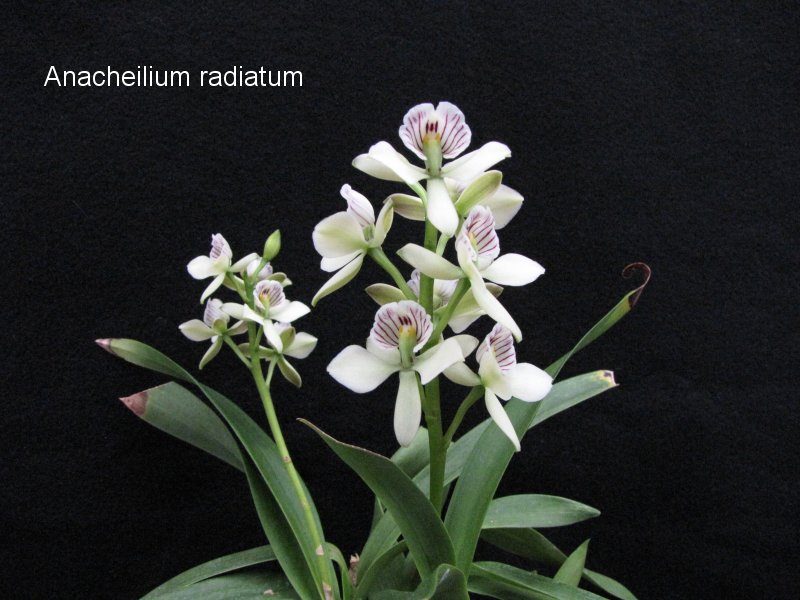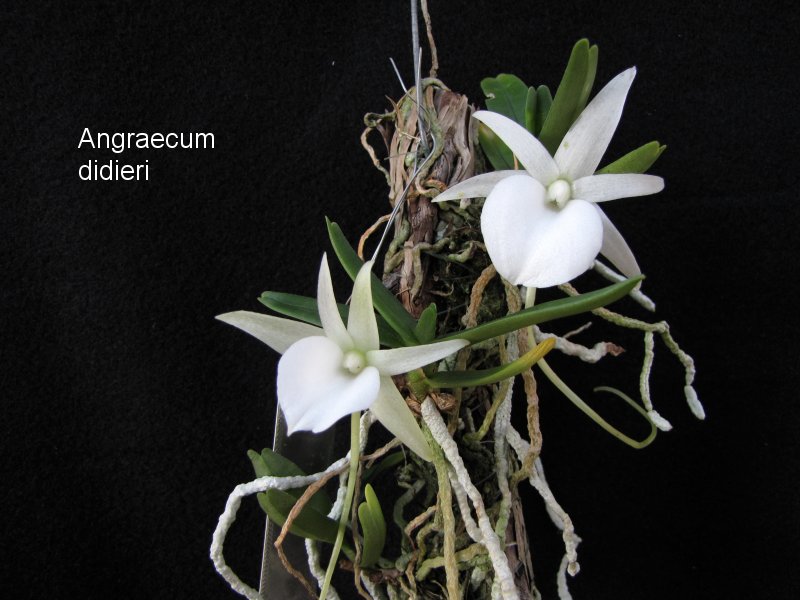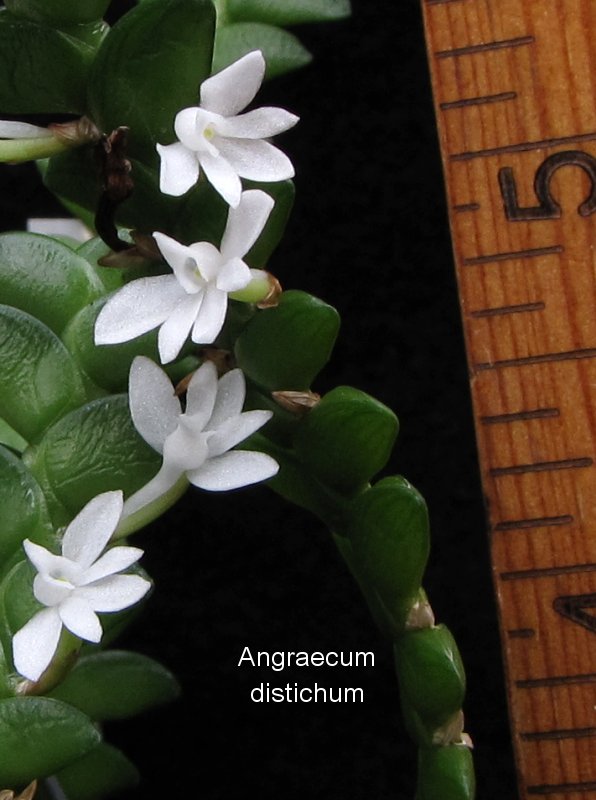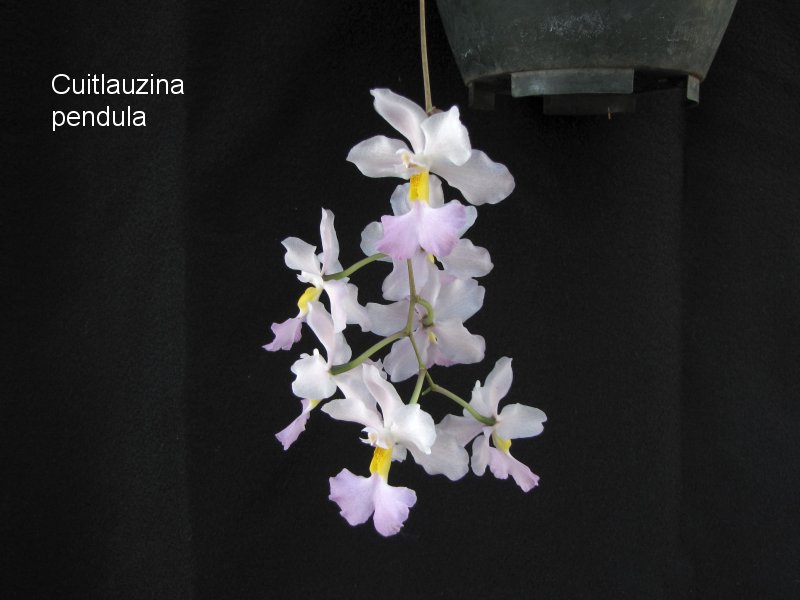
MISCELLANEOUS GENERA
| The term "miscellaneous" is not to diminish the significance or beauty of the plants. I just haven't yet photographed enough of any one genus to devote a separate page to any of them. |

| The Acineta which blooms on a pendulous spike is endemic to the Andean regions from Venezuela to Ecuador. Few plants are even found in the wild anymore. The species has survived and flourished because the campesinos of the region cultivate them by hanging them on the fruit trees of their plantations. |


| This is familiarly called the "Cockleshell Orchid" because of the shape of it's upward pointing lip. A very common orchid wild in Florida, many of the islands of the Caribbean and northern South America. |

| The radiatum species grows in Mexico, Central America, and northern South America. |

| A miniature of the genus Angraecum which is native to Madagascar. |

| The flowers of distichum (above and below) are only about a quarter inch across but the plant produces many of them during blooming. This plant is found in the wild in most of equatorial Africa. |


| The so-called "Spider Orchid" Brassia is found throughout tropical America. |


| This species of Coelogyne is found in Malaysia, Sumatra, Bali and Java. |


| A popular "man-made" hybrid, the Colmanara is a cross of Miltonia, Odontoglossum, and Oncidium, all natives of tropical America. |


| The pendular blooming Cuitlauzina is native to the southern areas of Mexico where it grows in pine forests. This is a tricky orchid to bloom. It requires a cool dry winter until growth appears in the spring and then needs profuse watering and fertilizing to complete it's cycle. |


| The Disa is an even more tempermental and fragile plant to grow but rewards the effort with long-lasting blossoms. It's found in the wild around Table Mountain on the peninsula extending south of Capetown, South Africa. |


| An hybrid of a Dorita and a Phalaenopsis. |

| The Encyclia alata is found in profusion in Mexico and Costa Rica. |


| This tiny fragrant flower is native to Taiwan. |


| This plant grows in abundance in Mexico and Central America and is noted for it's smell resembling that of cinnamon. |

| An intrageneric cross of two plants native to Mexico and Central America. |
